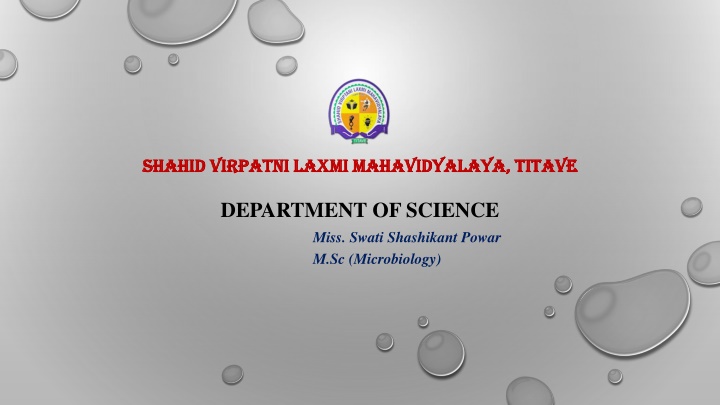
DNA Replication Process in Prokaryotes: Steps, Enzymes & Mechanism
Explore the detailed process of DNA replication in prokaryotes, including initiation, elongation, and termination steps. Learn about the role of enzymes like helicase, ligase, primase, and endonucleases in DNA replication. Understand how RNA primers are synthesized and the coordination of DNA polymerases to replicate genetic material in prokaryotic cells.
Download Presentation

Please find below an Image/Link to download the presentation.
The content on the website is provided AS IS for your information and personal use only. It may not be sold, licensed, or shared on other websites without obtaining consent from the author. If you encounter any issues during the download, it is possible that the publisher has removed the file from their server.
You are allowed to download the files provided on this website for personal or commercial use, subject to the condition that they are used lawfully. All files are the property of their respective owners.
The content on the website is provided AS IS for your information and personal use only. It may not be sold, licensed, or shared on other websites without obtaining consent from the author.
E N D
Presentation Transcript
SHAHID SHAHID VIRPATNI VIRPATNI LAXMI LAXMI MAHAVIDYALAYA MAHAVIDYALAYA, , TITAVE TITAVE DEPARTMENT OF SCIENCE Miss. Swati Shashikant Powar M.Sc (Microbiology)
DNA Replication in Prokaryotes DNA Replication in Prokaryotes
DNA Replication Steps 1.Initiation 2.Elongation 3.Termination
Role of Enzymes in DNA Replication 1.DNA-dependent DNA polymerase DNA polymerase is of three types 2.DNA Polymerase I It is a DNA repair enzyme. It is involved in three activities: 5 -3 polymerase activity 5 -3 exonuclease activity 3 -5 exonuclease activity 3.DNA Polymerase II It is responsible for primer extension and proofreading. 4.DNA Polymerase III It is responsible for in vivo DNA replication.
5.Helicase Helicase is the enzyme, which unzips the DNA strands by breaking the hydrogen bonds between them. Thus, it helps in the formation of the replication fork. 6.Ligase Ligase is the enzyme which joins together the Okazaki fragments of the discontinuous DNA strands. 7.Primase This enzyme helps in the synthesis of RNA primer complementary to the DNA template strand. 8.Endonucleases These produce a single-stranded or a double- stranded cut in a DNA molecule.5
DNA Replication Process in Prokaryotes 1.The two strands of DNA unwind at the origin of replication. 2.Helicase opens the DNA and replication forks are formed. 3.The DNA is coated by the single-strand binding proteins around the replication fork to prevent rewinding of DNA. 4.Topoisomerase prevents the supercoiling of DNA.
5.RNA primers are synthesised by primase. These primers are complementary to the DNA strand. 6. DNA polymerase III starts adding nucleotides at the end of the primers. 7.The leading and lagging strands continue to elongate. 8.The primers are removed and the gaps are filled with DNA Polymerase I and sealed by ligase.
